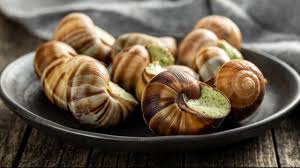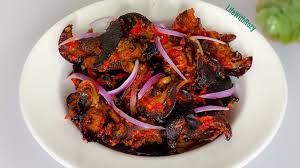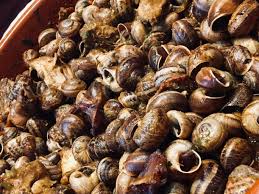Snails, often overlooked in culinary contexts, are a delicacy in many cultures around the world. Known scientifically as gastropods, they belong to a diverse group of mollusks, with various species being consumed for their unique flavors and textures.
These small creatures offer a range of nutritional benefits, making them an appealing addition to a balanced diet. With increasing interest in sustainable food sources, snails have gained popularity not just for their taste but also for their environmental advantages and health benefits.
Snails are low in calories and rich in protein, making them a healthy choice for many diets. A typical serving of snails contains approximately 100 calories and provides around 20 grams of protein, which is comparable to that found in meat and fish.
They are also a good source of essential vitamins and minerals, including vitamin B12, vitamin E, iron, magnesium, and selenium. The protein in snails is considered high-quality, containing all nine essential amino acids necessary for human health.
This makes them an excellent choice for vegetarians and those seeking alternative protein sources. Furthermore, snails are naturally low in fat, particularly saturated fat, which can contribute to heart health when included in a balanced diet.
Their fat content is primarily healthy unsaturated fats, beneficial for overall well-being. Additionally, snails are packed with essential vitamins and minerals. Vitamin B12 is crucial for nerve function and the production of DNA and red blood cells.
Iron supports oxygen transport in the body, while magnesium plays a role in various biochemical reactions, including energy production. Snails also provide antioxidants like selenium, which help combat oxidative stress.
The culinary uses of snails vary widely across different cultures. In French cuisine, escargot is perhaps the most famous dish, where snails are typically cooked with garlic, butter, and parsley, creating a rich and flavorful experience.
The preparation involves cleaning and cooking the snails, often served in their shells to maintain moisture and flavor. Snails can be incorporated into a variety of dishes beyond traditional recipes.
They can be grilled, sautéed, or used in soups and stews. Their mild flavor absorbs spices and herbs well, making them adaptable to different culinary styles. In addition to French cuisine, snails are enjoyed in various forms across the globe.
In Spain, they are featured in paella, while in Italy, they may be included in pasta dishes. Each region has its unique take, highlighting the versatility of snails as an ingredient. As global interest in sustainable food practices grows, snails are emerging as an eco-friendly option.
They require less land and resources to farm compared to traditional livestock, producing lower greenhouse gas emissions. This makes them an appealing choice for environmentally conscious consumers.
Chefs and home cooks alike are experimenting with snails in innovative ways, creating fusion dishes that blend traditional snail preparations with modern cooking techniques.
This exploration not only showcases the culinary potential of snails but also promotes their nutritional benefits. In conclusion, snails are more than just a unique culinary item; they are a nutritious food source with diverse culinary applications.
As awareness of their health benefits and sustainability increases, snails are likely to find a more prominent place in the global food landscape. Whether enjoyed in classic dishes or modern adaptations, snails offer a delightful blend of taste, nutrition, and culinary versatility.
Types of Edible Snails

Many different species of snails are considered edible. Here are some of the most popular types:
1. Helix aspersa: Commonly known as the garden snail, this species is widely consumed in Europe. It is characterized by its coiled shell and tender flesh.
2. Achatina fulica: Known as the giant African land snail, this species is larger than many others. It is popular in African and Asian cuisines and is often farmed for its meat.
3. Cantareus apertus: Also called the common brown garden snail, this species is consumed in various countries. It has a robust flavor and firm texture.
4. Pomacea canaliculata: Known as the apple snail, this species is popular in Asian cuisine. It has a unique taste and is often used in soups and stir-fries.
5. Eobania vermiculata: This species, also known as the Mediterranean snail, is often found in Mediterranean dishes. It is smaller and has a slightly different taste profile.
Nutritional Composition of Snails
Snails are rich in various nutrients, making them a healthy food choice. Here’s a breakdown of their nutritional composition:
1. Protein: Snails are an excellent source of high-quality protein. They contain about 15-20% protein, which is essential for muscle growth and repair.
2. Low in Fat: Snails are low in fat, with only about 1-2% of their weight coming from fat. This makes them a suitable option for low-fat diets.
3. Vitamins: Snails are rich in vitamins, particularly B vitamins like B12, which is crucial for nerve function and energy production. They also contain vitamin E, which acts as an antioxidant.
4. Minerals: Snails are a good source of essential minerals, including iron, magnesium, phosphorus, and zinc. These minerals are vital for various bodily functions, such as oxygen transport and immune system support.
5. Omega-3 Fatty Acids: Some snail species contain omega-3 fatty acids, which are beneficial for heart health and reducing inflammation.
Health Benefits of Eating Snails
Including snails in your diet can offer various health benefits:
1. Supports Muscle Health: The high protein content in snails helps build and maintain muscle mass, making them a great choice for athletes and active individuals.
2. Boosts Immune System: The minerals and vitamins found in snails, especially zinc, contribute to a healthy immune system, helping the body fight off infections.
3. Improves Heart Health: Snails contain omega-3 fatty acids, which are known to reduce the risk of heart disease by lowering cholesterol levels and promoting healthy blood circulation.
4. Aids Digestion: Snails are rich in fiber, which can improve digestive health by promoting regular bowel movements and preventing constipation.
5. Promotes Healthy Skin: The antioxidants and vitamins in snails may help improve skin health, reducing signs of aging and promoting a radiant complexion.
Read Also: All You Need To Know About Mow Lawn Flowers
Common Culinary Uses of Snails

Snails are versatile in the kitchen and can be prepared in various ways. Here are some common culinary uses:
1. Escargot: This classic French dish involves cooking snails with garlic butter and herbs, typically served in their shells. It’s a popular appetizer in French cuisine.
2. Soups and Stews: Snails can be added to soups and stews for extra flavor and protein. They pair well with vegetables and spices, enhancing the overall dish.
3. Stir-Fries: In Asian cuisine, snails can be stir-fried with vegetables, soy sauce, and spices for a quick and flavorful meal.
4. Casseroles: Snails can be included in casseroles, providing a unique texture and taste. They work well with rice, pasta, or vegetable-based dishes.
5. Salads: Snails can be tossed in salads, adding a protein boost. They pair well with greens, dressings, and other toppings.
Traditional Dishes Featuring Snails
Many cultures have traditional dishes that highlight the culinary value of snails. Here are some notable examples:
1. Escargot de Bourgogne: A classic French dish, this preparation involves snails cooked in garlic butter, parsley, and sometimes white wine. They are often served in their shells, making them a visually appealing appetizer.
2. Snail Curry: In parts of India, snails are used in spicy curries. The dish typically features a mix of spices, coconut milk, and vegetables, showcasing the rich flavors of Indian cuisine.
3. Snail Stew: In Mediterranean countries, snail stew is popular. This dish combines snails with tomatoes, herbs, and sometimes beans, creating a hearty and flavorful meal.
4. Snails with Polenta: In Italian cuisine, snails are often served over creamy polenta. The dish is typically flavored with garlic and herbs, offering a comforting and delicious meal.
5. Sakam (Snail Dish): A traditional dish in some West African countries, Sakam involves cooking snails with spices, vegetables, and sometimes groundnut paste. This dish is rich in flavor and nutrients.
Snails in Gourmet Cuisine
In gourmet cooking, snails are often elevated to a delicacy. Chefs create innovative dishes that highlight the unique qualities of snails. Some examples include:
1. Snail Risotto: Gourmet chefs may incorporate snails into a creamy risotto, using broth and white wine for added depth of flavor. The dish is typically finished with fresh herbs and parmesan cheese.
2. Snail Tacos: Some modern culinary approaches combine traditional ingredients with snails, such as using them in tacos. They are sautéed with spices and served with fresh salsa and avocado.
3. Snail Ravioli: In fine dining, snails can be used as a filling for ravioli, paired with rich sauces. This dish offers a sophisticated twist on Italian pasta.
4. Stuffed Snails: Gourmet chefs often create stuffed snails with a variety of fillings, such as cheese, herbs, and spices, before baking them in their shells for an elegant presentation.
5. Snail Carpaccio: A more adventurous approach involves serving snails as a carpaccio, thinly sliced and drizzled with olive oil, lemon, and fresh herbs, offering a unique starter.
Read Also: All You Need To Know About Artificial Hanging Plants
Preparation and Cooking Techniques for Snails

Proper preparation is essential to ensure snails are safe and delicious. Here’s a step-by-step guide:
1. Cleaning: Snails should be purged by placing them in a container with water for 24 hours to clean their systems. After purging, rinse them thoroughly under running water.
2. Cooking: Snails can be boiled or steamed for a few minutes to cook them through. This step helps to soften the flesh and makes it easier to remove them from their shells.
3. Seasoning: After cooking, snails can be seasoned with garlic, herbs, and butter for flavor. Popular seasonings include parsley, thyme, and lemon juice.
4. Baking: Many traditional dishes involve baking snails in their shells with garlic butter and herbs. This technique allows the flavors to meld and the snails to absorb the seasonings.
5. Grilling: Snails can also be grilled for a smoky flavor. Brush them with a marinade before grilling for added taste and texture.
Pairing Snails with Other Ingredients
Snails pair well with various ingredients, enhancing their flavors and textures. Here are some popular pairings:
1. Garlic and Butter: This classic combination is a staple in many snail dishes, providing a rich and savory flavor.
2. Herbs: Fresh herbs like parsley, thyme, and dill complement the earthy taste of snails, adding freshness to dishes.
3. Cream and Cheese: Creamy sauces or cheese, such as goat cheese or parmesan, can elevate snail dishes, adding richness and depth.
4. Vegetables: Snails can be paired with vegetables like mushrooms, tomatoes, and spinach, enhancing both flavor and nutrition.
5. Spices: In some cultures, spices such as curry powder or chili can be added to snail dishes, providing a kick of heat and flavor.
Cultural Significance of Snails in Cooking
Snails hold cultural significance in many societies, representing traditional values and culinary heritage:
1. Symbol of Luxury: In many cultures, snails are seen as a delicacy and are often served at special occasions, symbolizing luxury and refinement.
2. Regional Traditions: Snail dishes are often tied to regional traditions, showcasing local ingredients and cooking techniques that reflect the area’s culinary history.
3. Cultural Heritage: In some regions, the consumption of snails is part of historical practices passed down through generations, reflecting the relationship between communities and their environment.
4. Nutritional Importance: In various cultures, snails are recognized for their nutritional value, particularly in regions where other sources of protein may be scarce.
5. Culinary Festivals: Snail-related dishes are often featured in food festivals, celebrating local cuisine and drawing attention to the culinary practices surrounding snails.
Benefits of Snail Farming
1. Sustainable Protein Source: Snails are an excellent source of protein, providing about 16-20 grams of protein per 100 grams. They are low in fat and high in essential amino acids, making them a nutritious option for consumers seeking alternative protein sources.
2. Low Environmental Impact: Snail farming requires less land and water compared to traditional livestock farming. Snails produce fewer greenhouse gases, making them an environmentally friendly choice for protein production.
3. Easy to Raise: Snails are relatively easy to farm and require minimal investment. They can thrive in various climates and can be raised in small spaces, making them suitable for urban farming.
4. Diverse Market Opportunities: In addition to meat, snails can be harvested for their slime, which is used in cosmetics and skin care products. The growing interest in natural and organic products has opened new markets for snail farming.
5. Cultural Significance: Snails are considered a delicacy in many cultures, especially in Mediterranean and Asian cuisines. Their popularity in gourmet cooking can enhance their market value.
Safety and Food Handling Tips for Snails
When farming and preparing snails, it is essential to follow proper safety and food handling practices to ensure quality and prevent foodborne illnesses.
1. Ensure Clean Habitats: Keep the snail farming area clean and free from contaminants. Regularly remove waste and debris to prevent the spread of diseases.
2. Monitor Snail Health: Regularly check the health of your snails. Look for signs of disease or distress, such as shell damage or unusual behavior, and take action promptly.
3. Rinse Thoroughly: Before cooking, rinse snails thoroughly under running water to remove dirt and debris. Soaking them in water can help purge any sand or impurities.
4. Cooking Temperature: Ensure that snails are cooked to a safe internal temperature of at least 145°F (63°C). This helps eliminate harmful bacteria and ensures that they are safe to eat.
5. Store Properly: Keep snails in a cool, humid environment before cooking. If you’re not cooking them immediately, store them in a breathable container and avoid airtight packaging to prevent suffocation.
Recipes for Cooking Snails
Here are two delicious recipes for preparing snails:
1. Garlic Butter Snails
Ingredients:
i. 1 dozen snails (cleaned and purged)
ii. 4 tablespoons unsalted butter
iii. 4 cloves garlic (minced)
iv. 2 tablespoons fresh parsley (chopped)
v. Salt and pepper to taste
vi. 1 teaspoon lemon juice
Instructions:
1. Preheat Oven: Preheat your oven to 350°F (175°C).
2. Prepare Garlic Butter: In a small saucepan, melt the butter over low heat. Add the minced garlic and cook for 1-2 minutes until fragrant. Stir in the parsley, salt, pepper, and lemon juice.
3. Coat Snails: Place the cleaned snails in their shells and spoon the garlic butter mixture over them.
4. Bake: Arrange the snails in a baking dish and bake for about 10-15 minutes, or until heated through and slightly bubbling.
5. Serve: Serve hot with crusty bread for dipping.
2. Snail Pasta
Ingredients:
-i. 1 dozen snails (cleaned and purged)
ii. 8 ounces pasta (spaghetti or fettuccine)
iii. 2 tablespoons olive oil
iv. 2 cloves garlic (minced)
v. 1 cup cherry tomatoes (halved)
vi. 1 teaspoon red pepper flakes
vii. Fresh basil (for garnish)
-viii. Salt and pepper to taste
ix. Parmesan cheese (for serving)
Instructions:
1. Cook Pasta: Cook the pasta according to package instructions until al dente. Drain and set aside.
2. Sauté Ingredients: In a large skillet, heat olive oil over medium heat. Add minced garlic and cook until fragrant, about 1 minute. Add cherry tomatoes and red pepper flakes, cooking until tomatoes soften.
3. Add Snails: Stir in the cleaned snails and cook for an additional 3-4 minutes, allowing them to heat through.
4. Combine with Pasta: Toss the cooked pasta into the skillet with the snail mixture. Season with salt and pepper.
5. Serve: Garnish with fresh basil and sprinkle with Parmesan cheese before serving.
Do you have any questions, suggestions, or contributions? If so, please feel free to use the comment box below to share your thoughts. We also encourage you to kindly share this information with others who might benefit from it. Since we can’t reach everyone at once, we truly appreciate your help in spreading the word. Thank you so much for your support and for sharing!
Read Also: A Guide to Waste Management Case Studies
Frequently Asked Questions
We will update this section soon.

